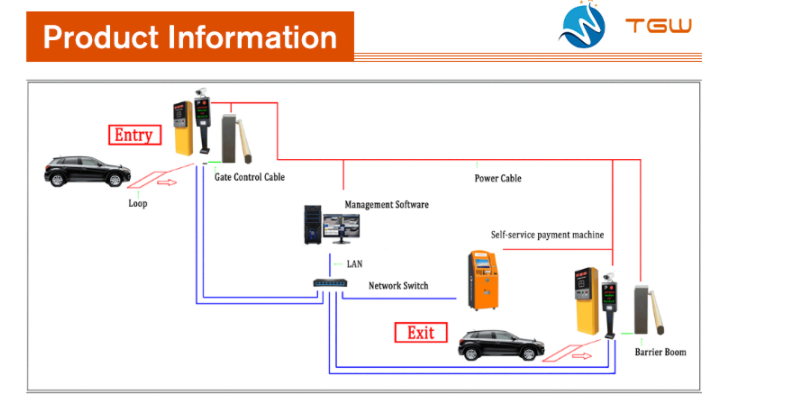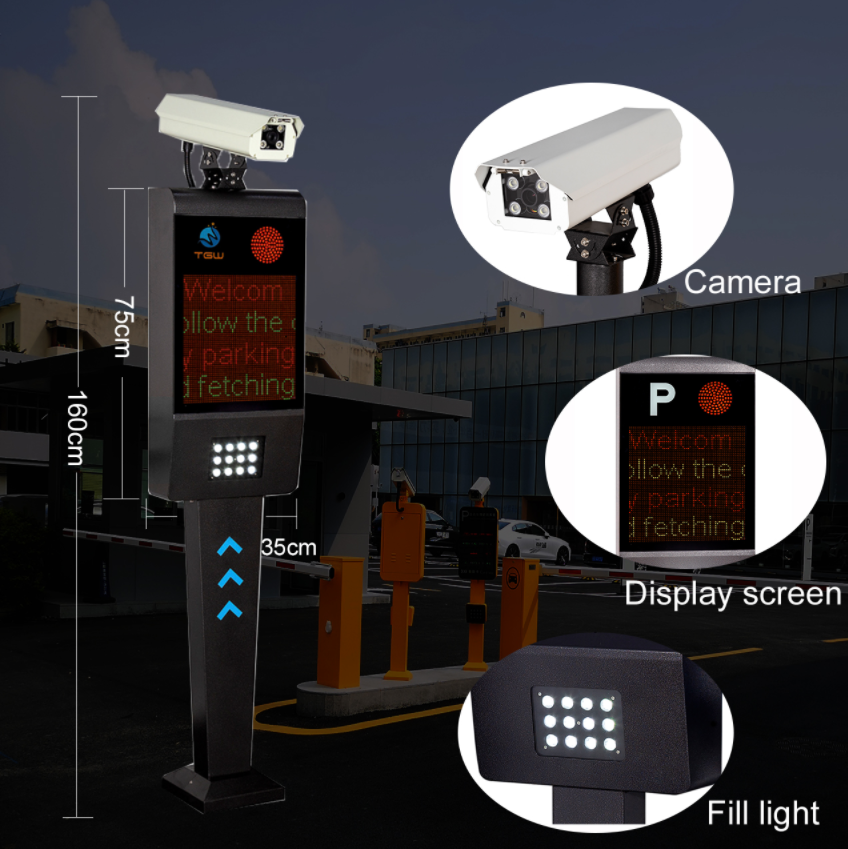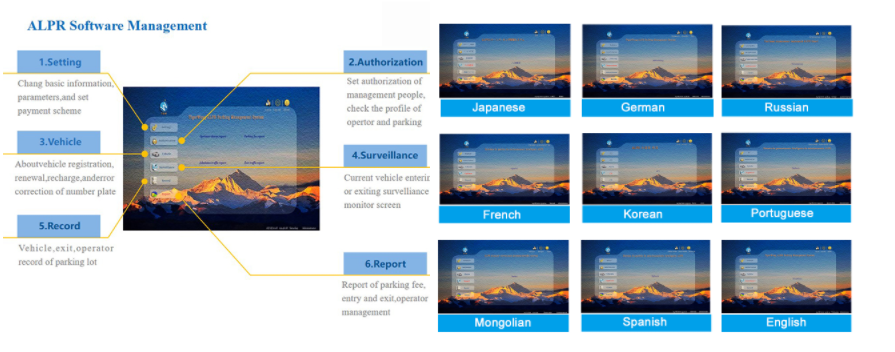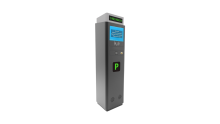TIGER PARKING smart rfid parking solution for access control entrance
LPR or ANPR (License plate recognition) technology can extract and recognize vehicle license plates in motion from a complex background, and recognize vehicle license plate information through technologies such as license plate extraction, image preprocessing, feature extraction, and license plate character recognition.
 Audited supplier
Audited supplierLPR or ANPR (License plate recognition) technology can extract and recognize vehicle license plates in motion from a complex background, and recognize vehicle license plate information through technologies such as license plate extraction, image preprocessing, feature extraction, and license plate character recognition.
What is LPR(License Plate Recognition) Technology?
License plate recognition(ANPR/ALPR/LPR) is one of the important components in modern intelligent transportation parking systems, and it is widely used.
Based on technologies such as digital image processing, pattern recognition, and computer vision, it analyzes the vehicle images or video sequences taken by the camera
to obtain the unique license plate number of each car to complete the recognition process.
Process description:
Entry: the license plate recognition camera captures an image by means of vehicle head detection or loop coil trigger, and the image is transmitted to the software.
The software algorithm recognizes the image, writes the recognition result into the database and returns it to the camera, and the camera sends the switch signal to
barrier switch.
Exit: the license plate recognition camera captures an image by means of vehicle head detection or loop coil trigger, and the image is transmitted to the software.
The software algorithm recognizes the image, outputs the recognition result and compares it with the entrance recognition result in the database. The comparison is
successful and the result is returned to the camera.

Hardware part introduction
1.Functions and features of each component
1) Camera: it mainly captures pictures, which are sent to the software for recognition. There are two ways to trigger the camera to capture pictures.
One is that the camera itself has a head-detection function, and the other is that the car is triggered by the loop coil when vehicle pass to capture the picture.
2) Display screen: you can customize the display contents of the display screen.
3) Column: the column and the appearance of the product are formed by cold-rolled iron sheet, strong and waterproof.
4) Fill light: With an automatic light sense < 30Lux, the light will be automatically opened according to the surrounding environment of the project site, and will remain
bright until the supplementary light detects that the surrounding environment becomes brighter, and the light sense will be automatically closed when it is greater than 30Lux.

Software part introduction
ALPR software interface-multiple languages
Software function introduction
1) The recognition module is built into the parking lot software, which can recognize the license plates of
123 countries and regions and output the results.
2) Parking software, which can manage the whole parking lot from entrance and exit to charging.
3) Set permissions for operators who manage parking lots.
4) Set the charging rules of the parking lot,input them into the system and charge them automatically.
5) Monitor the movement of vehicles in and out.
6) Keep a record of vehicle movements.
7) Form the report summary of vehicle access management, fee management and parking management.
8) The best solution of a set of parking software is to manage the parking lot with one in and one out. It can
also be used for two in and two out.If beyond this range, it may affect the efficiency of management or cause
the situation of stagnation, which also depends on the actual use of computers and the amount of vehicles.

 Audited supplier
Audited supplier
Ticket Box Paper Ticket

Card Swiping in Ticket Box

Sd-600f Touched Screen Metal Detection Security Gate

How to register the plate number in Tiger Wong ALPR parking software?

TGW customized swing turnstile and sliding turnstile with payment interface for ferry in Africa

High performance 10 inch LED Display customize payment interface sliding card collector turnstile gate

TGW New Published Hot RFID Security Gate Ticket & Ticketless Dispenser Smart Card Parking System

How does the automatic payment machine work with license plate recognition by cash?

how does an automatic payment machine work with rfid card by cash?








